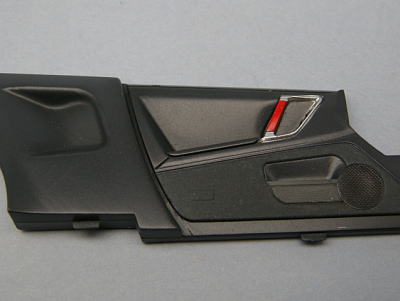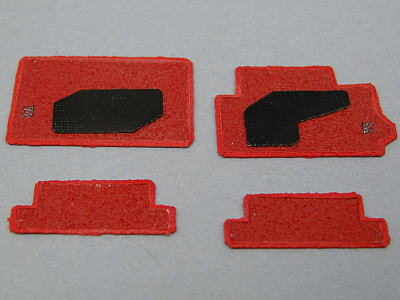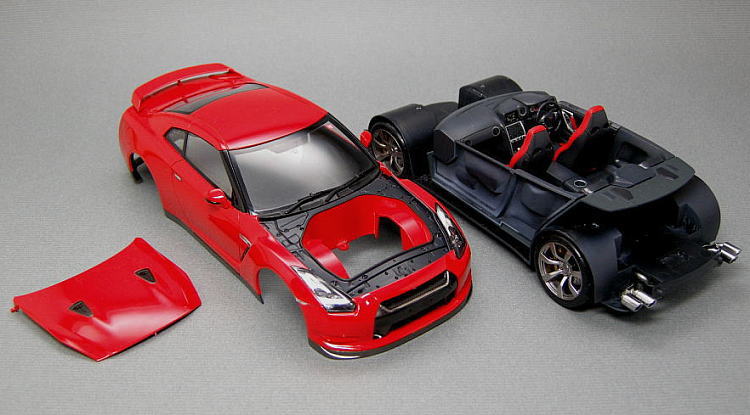There’s no reason to drive an automobile at 200 miles per hour. No appointment is so important, no traffic cop that lenient. Few cars are even capable of it.
Imagine, though, that you’re idling in a 1,500 horsepower car at the start of an airport runway two miles long. And you’re cleared for takeoff.
Wouldn’t you want to break the 200 mph barrier?
As an automobile critic, I have an unusual occupation. So this is why I actually find myself piloting a heavily-customized
Nissan GT-R, dubbed the Alpha 12.
Fifteen hundred horsepower is a ludicrous amount of power, but I’m on a decommissioned Air Force runway in northern
Michigan that once hosted B-52 bombers. It’s wide and long enough for the task.
The Nissan GT-R already qualifies as a supercar. The 2013 model costs around $100,000 and delivers 545 hp, hitting 60 mph in less than three seconds. That’s enough power, right?
Not for customers of
AMS Performance, a West Chicago, Illinois-based tuning company. The 30-employee outfit has been around for more than a decade, catering to a “mine is bigger than yours,” demographic, where more power is always better.
Performance Package
AMS specializes in “Alpha”
performance packages for the GT-R, rebuilding the V-6 engine with sturdier parts, bigger turbo chargers, special exhausts and reinforced transmissions.
Light modifications start at about $6,000. The Alpha 12 package costs around $100,000 (on top of the $100,000 of a new GT-R). For that, you get a claimed 1,100 horsepower with regular-pump gas, and 1,500 horses with 116-octane race fuel. The company says you can hit 60 mph in 2.4 seconds and the machine will cover a quarter of a mile in 8.97 seconds.
My goals today are twofold. I want to see how “real” the Alpha is, and I hope to top my personal speed record of 200 mph, achieved on a runway in a Lamborghini Gallardo nearly four years ago. I’d prefer not to kill myself.
This is just a practice run, however, to get a feel for the Alpha’s power. AMS sales manager Eric Gaudi is riding shotgun. When I ask if he’d like to accompany me later on my top-speed run, he fires back, “Not a chance.”
Gulping Air
I roll onto the gas carefully, clicking through the gears well before the red line. The huge twin turbos quickly spool to capacity, sucking in massive gulps of air, and then expelling them harshly through the waste gates. It sounds like a jet engine.
We streak down the runway, faster and faster. I’ve got eyes only for the shift points on the tachometer and the tarmac in front of me. Gaudi is watching a special GPS device called a
VBOX, more accurate than the speedometer, which tends to be significantly off at high speeds.
I slow down well before the runway’s halfway mark. Gaudi points to the VBOX and says, simply, “199.”
Oh, man. I wasn’t even trying.
Rolling back to our staging area on the side of the runway, I find the car drives easily: It’s very controllable and not at all scary.
Gaudi’s team adds race fuel to the tank. I pull back onto the runway, all alone now.
‘Death Zone’
Accelerating toward and beyond 200 mph is akin to being at
Mount Everest’s so-called “death zone.” If any little thing goes awry the situation can quickly turn critical. A strong cross wind, a poorly timed sneeze or, my worst fear, a blown tire, and the car’s straight-line trajectory could turn into an extended barrel roll.
The faster you go, the more air the car has to displace. Past 180 mph it becomes a dense wall. The car becomes unstable, with air channeling underneath, trying to lift it skyward.
The AMS engineers estimate that the Alpha 12 is mechanically capable of hitting 238 mph. It has no roll cage or specialty safety equipment and I’m not wearing a helmet. It’s basically a street-legal car capable of more than four times the typical 55 mph speed limit.
I stomp on the gas. There’s a moment’s pause as the turbos spool up to power. Then, like a match igniting gunpowder, a flash and a boom. The entire front of the car lifts.
Displaced Space
I slam the gears into second, then third. There’s a tingling at the nape of my neck. A sense of displacing air, space and reality.
The runway is crisscrossed by black skid marks left by jumbo jet landings that seem to streak toward me as I land-speed over the wide runway. Then they, too, disappear.
Number markers from one to ten are on the side of the tarmac. At the halfway mark, not even looking at the speedometer, I let off the gas, step on the brake lightly and then much harder.
I’m almost disappointed when I stop and find the runway still continues on for quite a distance. The Alpha has a lot more to give.
I look at my top speed on the VBOX then turn around and cruise slowly back the way I’ve come. My heartbeat is fairly steady.
In some 24 seconds, I’ve travelled from zero to 214 miles per hour.
The Nissan GT-R/AMS Alpha 12 at a Glance
Engine: 4.0-liter twin-turbo V-6 with 1,100 horsepower and
900 pound-feet of torque (1,500 hp and 1,050 pound-feet
with high-octane race gas).
Transmission: Six-speed dual-clutch automated transmission.
Speed: 0 to 60 mph in 2.4 seconds.
Gas mileage per gallon: 16 city; 23 highway (estimated).
Price as tested: $200,000.
Best feature: Insane top speed.
Worst feature: Few roads on earth where you can use all
that power.
Target buyer: The power-mad.
(Jason H. Harper writes about autos for Muse, the arts and leisure section of Bloomberg News. The opinions expressed are his own.)
Via :bloomberg.com
























































